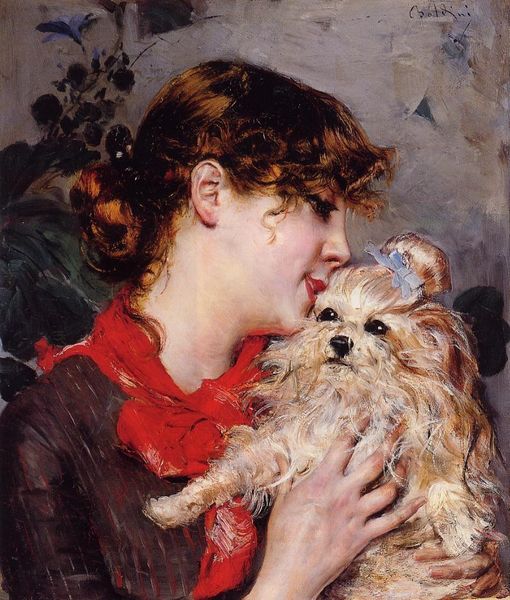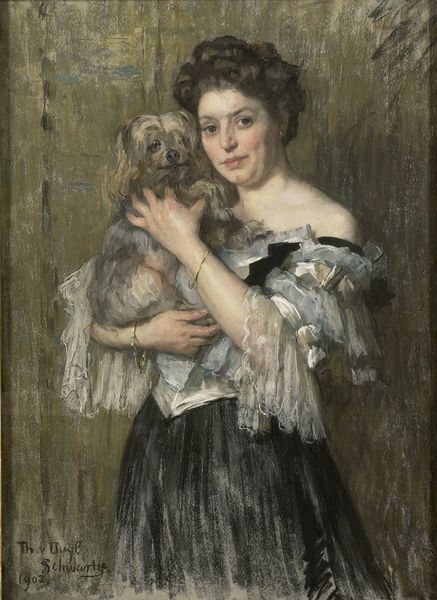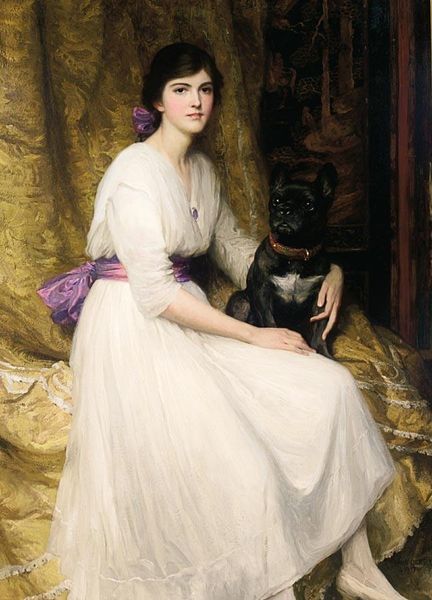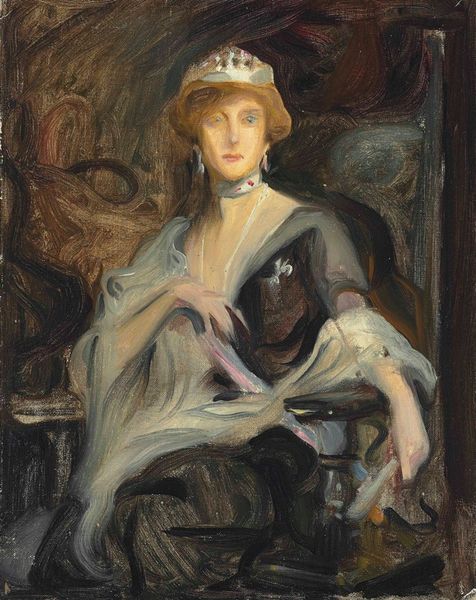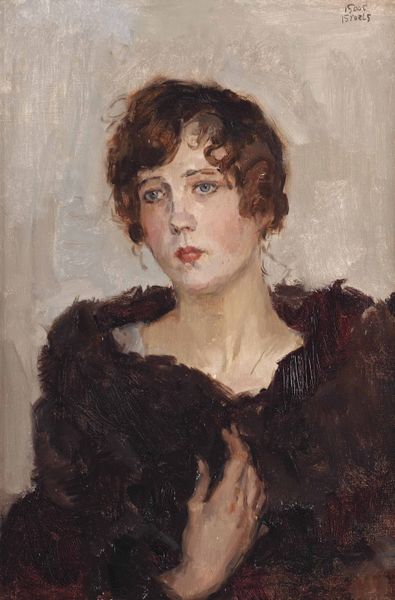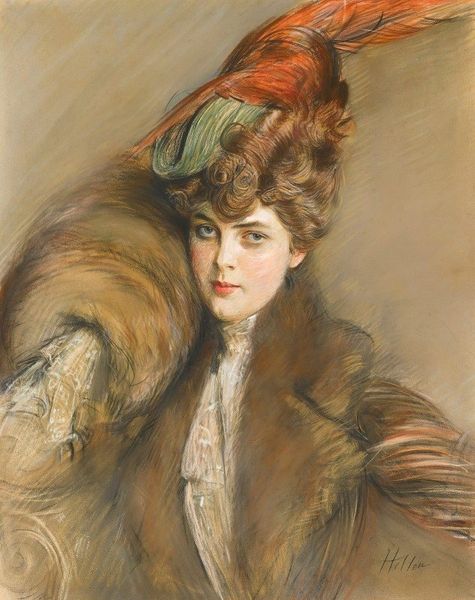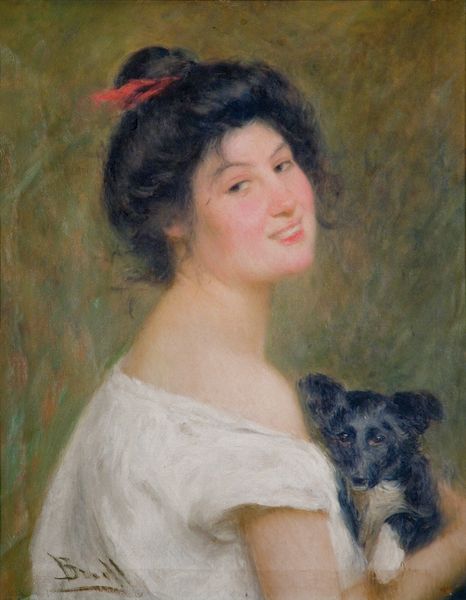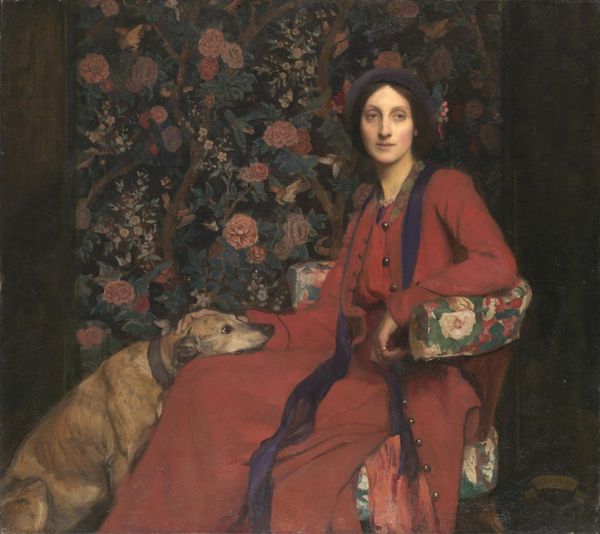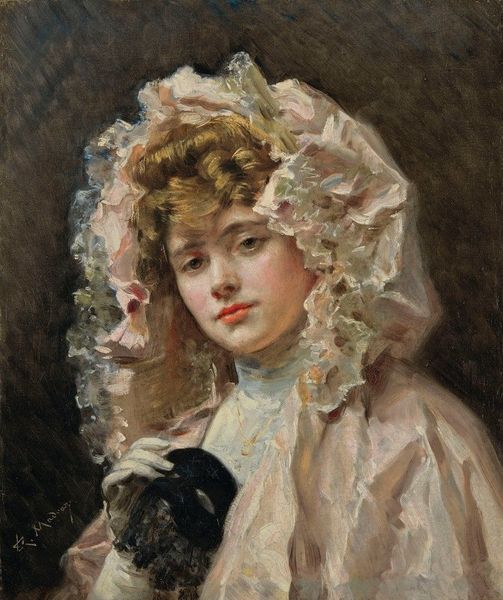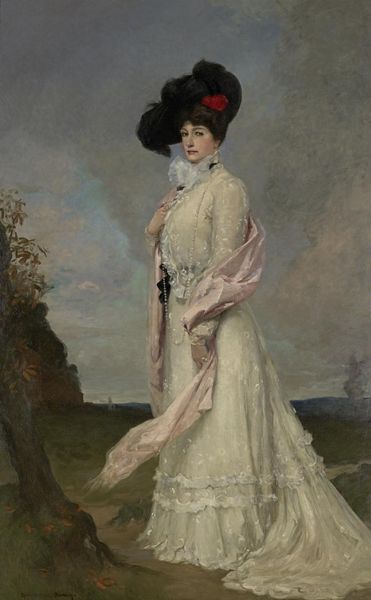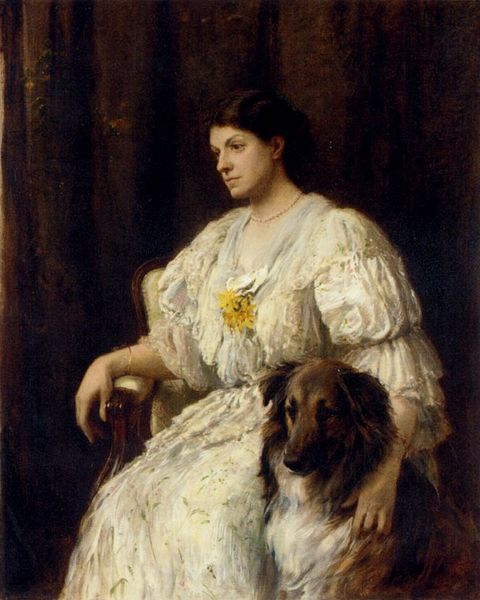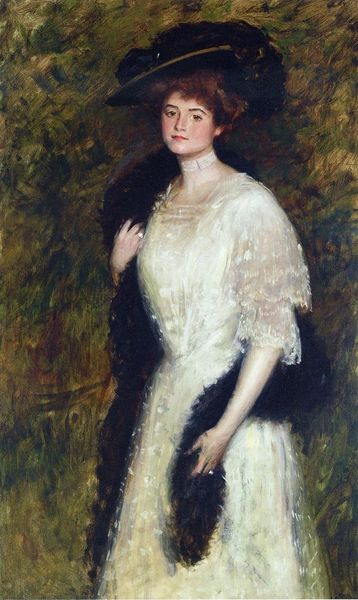
Copyright: Public domain
Curator: Here we have Rupert Bunny’s "Portrait of the artist's wife," an oil on canvas from 1902. It’s a genre painting that really captures the aesthetics of its time. Editor: The first thing that strikes me is the subject's gaze—almost challenging, isn't it? And that delicate yet palpable contrast between her elegant attire and the realism of the brushstrokes. Curator: Indeed. Consider the construction: we have oil paints laid on with visible, directional strokes and glazes, typical of Impressionism yet refined within the traditional genre of portraiture. Bunny was experimenting with how labor could produce 'high art'. Editor: And beyond the materials, look at the symbolism. A woman of her time with her dog: a symbol of fidelity, wealth, and status. This pet adds another layer of complexity—it suggests a softer, more domestic side contrasted with her composed exterior. Curator: Good point. The textures give us further clues about its creation. The hat's lace, her striped dress and the way light plays across the surface speak of contemporary fashions of industrialised textile manufacture in Europe and the possibilities for visual dynamism and display it gave painters like Bunny. Editor: I see also that the artist is creating a complex language of femininity, innocence, and knowing worldliness all interwoven. It makes us ponder how women in art were starting to define themselves outside traditional archetypes at the turn of the century. Curator: Absolutely. This work brings to mind an important consideration when examining art of this era: the burgeoning consumer market alongside the artist’s creative agency within it. Were portraitists like Bunny merely documenting society, or helping shape a shared visual culture? Editor: What a beautiful conundrum—are images simply mirrors reflecting reality, or instruments that shape it? I now read in the brushstrokes echoes of personal intention and, perhaps, hints of longing. Curator: Agreed. Appreciating art means also accounting for the historical labor and technologies informing an artist's vision, in addition to the symbolic weight behind the subjects, or compositions of their chosen theme. Editor: I find myself drawn to the way Bunny managed to compress and translate a myriad of social and personal references with so few visual cues. It truly speaks to the lasting potency of symbols across generations.
Comments
No comments
Be the first to comment and join the conversation on the ultimate creative platform.

